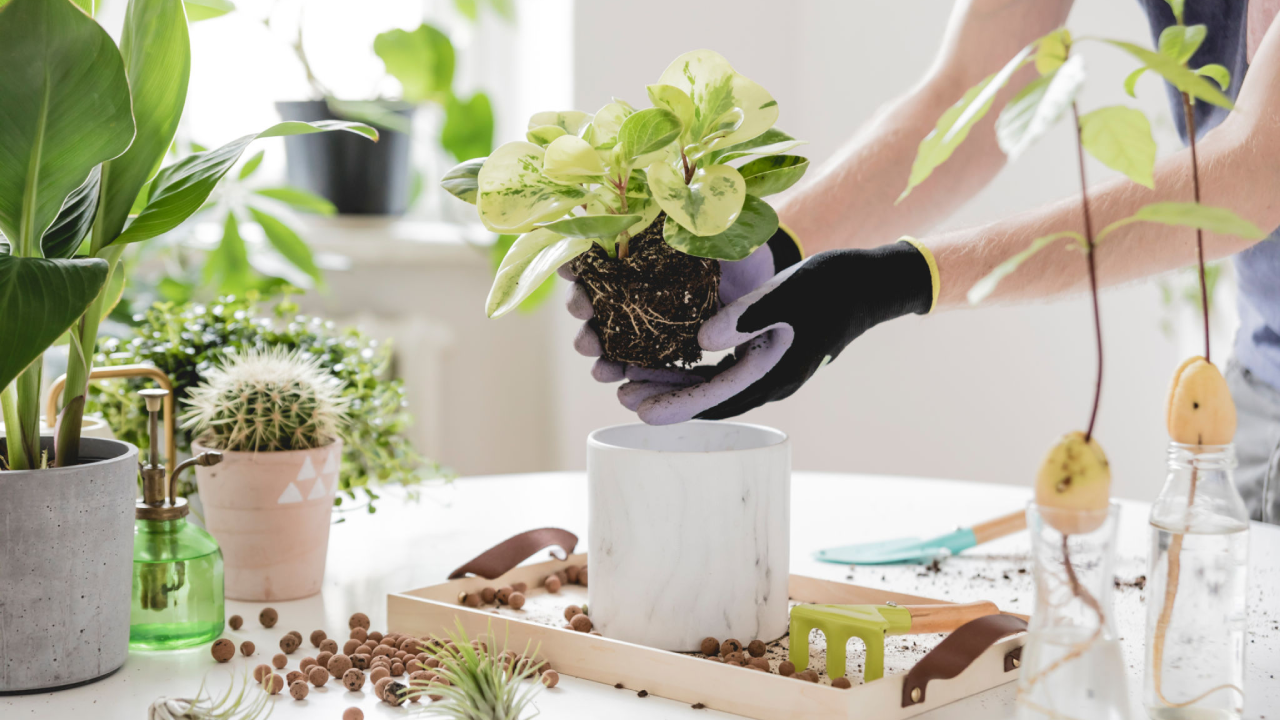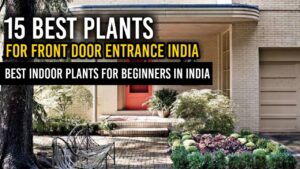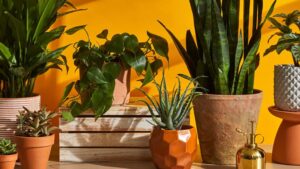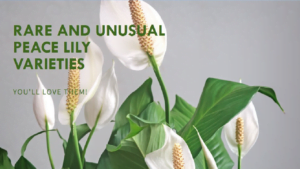I know you must be thinking like why do I need to repot my indoor plant? Does repotting an indoor plant lead to death?
Don’t worry, you are not the only one because most of us usually have that kind of thinking that “repotting leads to death of the plant.” But that’s not the case. For the development of the plant, repotting is a very essential step needed. Every plant owner must repot their indoor plants from time to time.
If you are like me, a beginner plant lover living with a lot of houseplants, you may have heard the term “repotting” for the first time or heard it before. Now, you need to know what is repotting, why and when you need repotting, and how you can do it.
Lucky for you, I’m here to spill the beans, I mean to say, I’m here to tell you everything you need to know about repotting an indoor plant. So, why are we waiting? Let’s check it out below!
What Is Repotting?
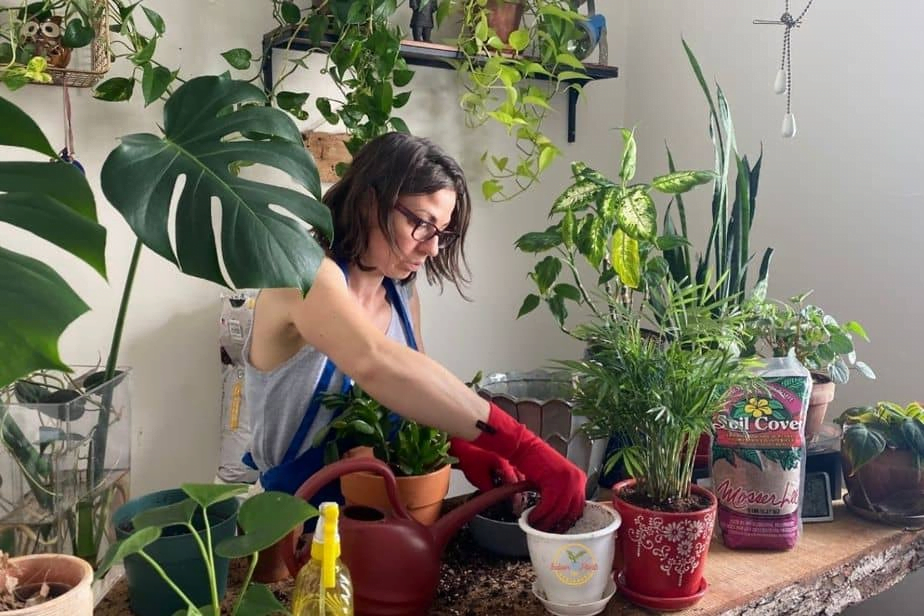
Repotting means refreshing the old potting soil in which your plant was put, it doesn’t mean changing the container. Following this step from time to time improves the plant’s absorption of the nutrients they require the most.
Why you should do this process is because when an indoor plant’s roots protrude from the pot, they are unable to absorb the soil’s necessary nutrients and water. Due to this, the plant is significantly impacted and the older leaves lose their color and dry up because they don’t get enough nutrition. Therefore, to avoid such situations, the plants should be replanted in a larger container, which boosts their chances of surviving longer.
Also, keep in mind that not all plants need to be repotted. If you properly care for your plants, certain plants can last for several months or even years without needing to be replanted. Whether a plant has to be replanted, depends on its type and requirements.
Why do you need repotting and how should you do it? All this information on when, why, and how to repot the plant, is listed below. Let’s check it out!
Why Should You Repot an Indoor Plant?
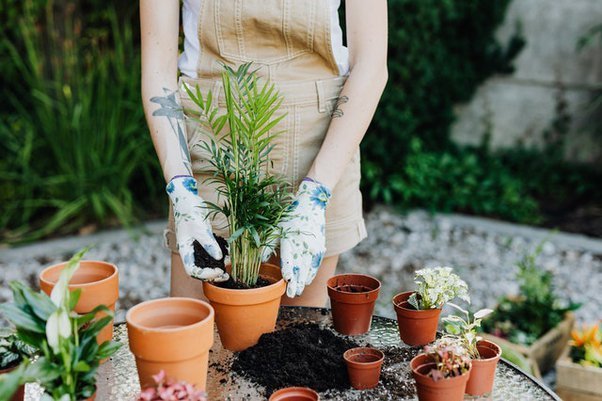
The majority of beginner plant owners ask me this question, “why do you need to repot a houseplant?” According to some individuals, an indoor plant can thrive without repotting. Do you honestly believe that it is possible without repotting a plant? Will the plant survive if it doesn’t get the necessary minerals?
No, it is not possible as a plant also requires nutrition to live, just as all humans do. Like a growing youngster needs a larger bed to sleep peacefully and so, a plant needs a larger pot to develop freely. Repotting is a necessary step.
Repotting a plant can give the roots a larger surface area to receive the nutrients that they won’t be able to get from the smaller pot once they are outgrown. Repotting ensures that the roots have adequate room to breathe and new ground to thrive in. Most indoor plants thrive for years in the same pot, however, some types of indoor plants grow quickly and need repotting very soon.
5 Reasons To Repot An Indoor Plant
5 reasons you must know why you need to repot an indoor plant:
1. Room to Breathe
Plants need space to breathe, much like humans. Repotting is necessary for them to build a successful, healthy root system. Also, their ability to live steadily increases by giving them large space with more nutrients and minerals. And so, they get adequate room to grow and live.
2. Better Watering
Usually, when a plant outgrows it tends to form a root-bound. Root bound is a problem in plants as when they need space, they end up tangling with each other or outside the plant to grow. This makes the water seep through the soil without providing anything to them. Hence, if plants are repotted it gives them the proper water supply needed to grow and the roots don’t get root bounded.
3. Disease Prevention
Another reason for repotting is to avoid the outbreak of any disease in plants. Like humans, plants also face many diseases. Root rot is an issue that develops when overwatered roots become damaged and turn black and brown from below. Due to this issue, they are unable to absorb water; to help in the plant’s recovery and to prevent the spread of any fungus or disease, the affected areas must be removed.
4. Fresh Soil
Plants need fresh soil always to receive all the nutrition it requires from it. However, with time, the soil’s nutrients get depleted. And so, the plant suffers as a result of a lack of minerals. To avoid such a situation, you have to change the potting soil, by repotting. It provides a boost of minerals for the plant.
5. Dividing
As the plants outgrow they divide themselves and tangle up with each other which is not beneficial for the plant. They use the extra room to grow a new plant that demands more space. Hence, repotting helps the plant to strengthen and grow new plants.
When Should We Repot An Indoor Plant?
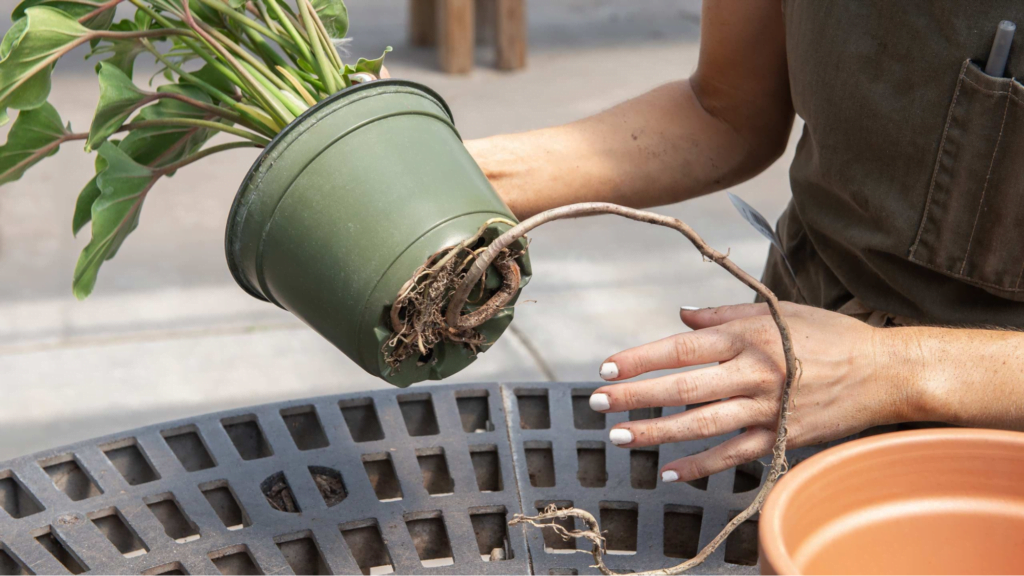
As I am experienced in gardening in both outdoor and indoor plants, and if you ask me this question, I will advise that the perfect time to repot indoor plants is between early spring and late summer. Your indoor plants will grow actively during this time and receive all the necessary nutrients they require from the soil.
A plant can be repotted at any moment, but you must be very careful not to overwater it. For indoor plants to develop naturally and healthily, the right environment and care are required.
Steps To Repot An Indoor Plant
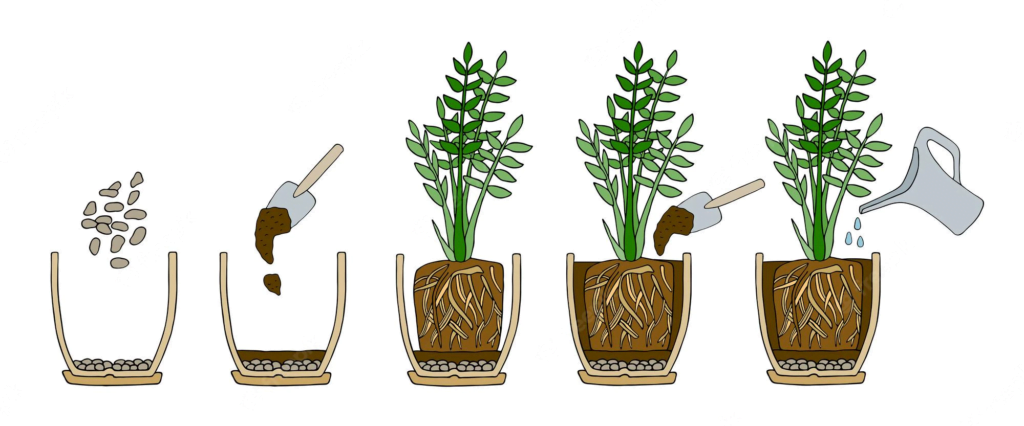
To understand more about repotting, let’s first check out the steps required to follow and how exactly we are supposed to do it:
Step 1: First of all, gently remove the plant from the pot by either holding its stem or leaves. Tap the bottom of the pot to make it easier to release the plant entirely. And then, check to see if the soil is missing or if any of the roots are entangled or stuck within the pot. If such situations occur, it is time to repot the plant.
Also, try to loosen the roots slowly from your hands, and be sure to leave the thicker roots at the base of the foliage. If there is a root bound, then try to untangle them as much as you can as roots are very delicate and can get easily damaged if not handled properly.
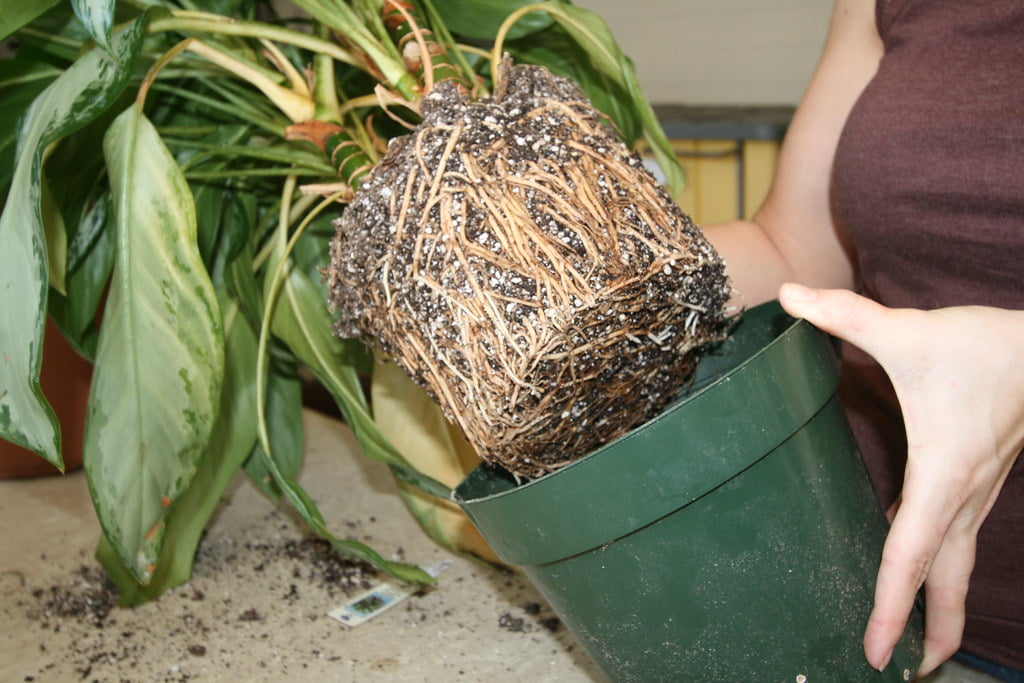
Step 2: Next, it’s time to select a pot. When choosing the vessel, you must be very cautious. The new container needs to be at least two inches broader than the old one. Nowadays ceramic pots are commonly used for indoor plants. Although they have a lovely
appearance, clay pots are more porous and cause the soil to dry up quickly. As they tend to draw water from the ground, drying it out, it will be best to soak them first in the water for a few hours.
Tropical plants are best to keep in plastic pots since they retain soil moisture for a very long time. But whatever the container you pick, make sure the plant has drainage at the bottom so that any extra water may drain away from it.

Step 3: Next, you must choose the potting soil after picking out a pot. Remember that the ideal potting soil required for indoor plants must be light and fluffy with a generous sprinkling of sterilized organic matter and compost to effectively retain soil moisture. However, you cannot use garden soil for houseplants. Potting soil should be rich with nutrients and minerals for the plants.
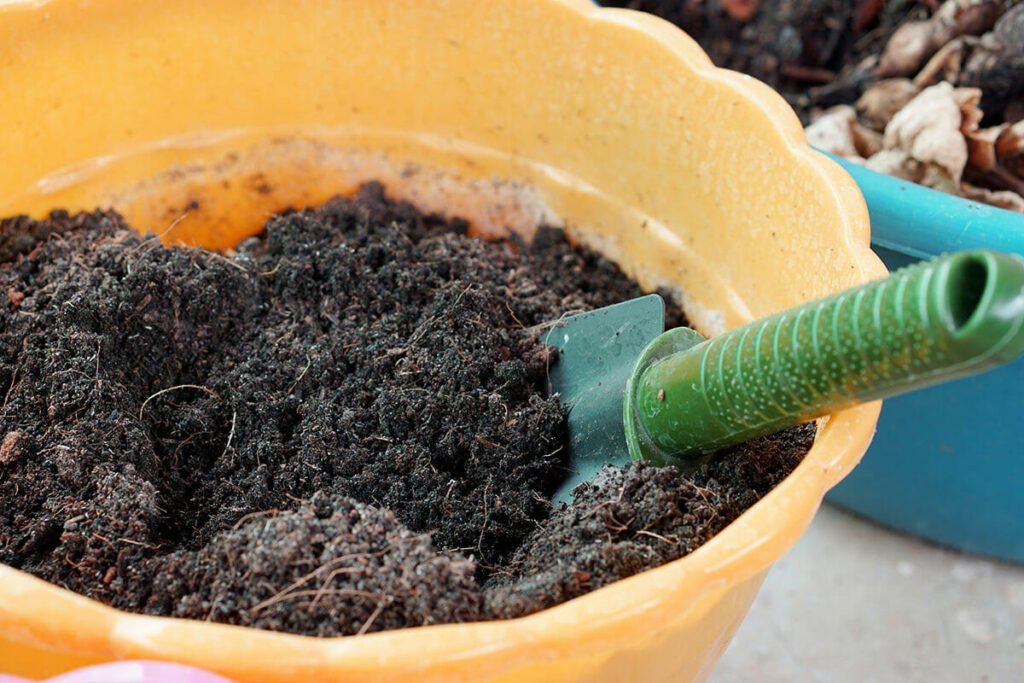
Step 4: Lastly, the potting soil in the pot must now be filled up to the plant’s crown. To prevent creating air pockets, cover the roots completely with soil. Add a saucer as well to gather the extra water. Before fertilizing them, you must wait for at least two to three months. Repotted plants don’t need a lot of fertilizer because they are already nutrient-rich. If you are thinking of fertilizing the plants, you should first check whether the plant needs fertilization or not.

Some Indoor Plants That Don’t Need Repotting
Now you must be aware that the majority of indoor plants require repotting, but some indoor plants don’t need to be repotted for several years. If you find repotting to be a tedious step to follow, you can buy these kinds of indoor plants which don’t require repotting. For your convenience, I have listed below some of the indoor plants that don’t need repotting. Let’s check it out!
1. Snake Plant
One of the most popular and well-known indoor plants among most plant lovers is the snake plant. They are identified by their long, sharp leaves. These plants are the best decorative plants for homes and offices because they don’t require repotting for years and also need less care and attention.
2. Linear Hoya
This is a hanging plant, Linear Hoya. They fall from the pot and tumble down. They choose to remain, seeming lovely in the vessel. This houseplant behaves exactly the opposite of other plants as it produces more flower blossoms, with larger root bounds. Also, these plants don’t require any repotting for many years.
3. Hawaiian Plant
Another lovely, lush plant that doesn’t need to be repotted is this one. Before it needs to be repotted, it can stay in the pot for at least 2 – 3 years.
4. Dragon Tree ‘Magenta’
This plant requires very minimal care. This plant requires repotting after every 2-3 years. Its long, red-edged leaves make it look prettier if placed at the office or in the house.
5. Candelabra Cactus
It is a low-maintenance indoor plant that looks nice in workplace settings. It takes them about 3–4 years before they require repotting.
6. Banyan Tree
It is one of the oldest indoor plants to grow. They need to spread out more and hence require more breathing space. Also, it is considered to be one of the world’s tallest trees. Furthermore, they have several qualities and are easy to care for. They thrive more if the roots are bounded and they do not need repotting for 2-3 years.
7. Blue Star Fern
This type of plant enjoys root-bound conditions and won’t require repotting until it outgrows its container. Furthermore, this epiphytic plant absorbs nutrients and moisture from the air and its roots.
Conclusion
You may have figured out by now why so many indoor plants require repotting. Before transplanting any indoor plant, always check out the steps that I have mentioned above. These steps are really necessary for a better growth of the plant and to make the plant live longer.
Changing the soil from time to time for its nutrients to develop and to control the outflow of the roots is very necessary. They give the plant better growth and direction.
I hope this article was beneficial to you and gave you the knowledge you needed. Please comment down below regarding any doubts or advice and don’t forget to follow us on social media too!
Related Articles
- 15 Best Plants for Front Door Entrance India | Auspicious plants for front door
- 10+ Money plant Benefits That Will Make you Keep It In Your House
- Are Spider Plants Toxic to Cats?- 4 Ways To Prevent Your Cats From Eating Spider Plants.
- Best Plants for the House – 8 Top Apartment Plants That You Can’t Miss
- How to Braid Your Snake Plant: Tips and Care Guide
- 20+ Rare and Unusual Peace Lily Varieties You’ll Love

